Are virtual reality meetings the future of remote work?
Let’s explore what virtual reality meetings might look like in the near future, and how virtual spaces might transform remote work in fascinating ways.

In 2022, workplace meetings are already looking very different to what they did only a few years ago.
Instead of coming together in boardrooms or meeting spaces, we’re catching up over video conferencing tools like Zoom or GoogleMeets. Sweatpants and jeans have replaced pencil skirts and trousers (corporate glamour is reserved only for the top half these days), and we’re note-taking on Miro or Confluence instead of whiteboards or notebooks.
When we think back to our 2019 selves (they really had no idea what was coming), we would have never dreamed that the way we work would have transformed so drastically, so fast. With remote or hybrid work now the norm for most businesses, in-person meetings are now the novelty and remotely conducted online meetings are here to stay.
But the transformation of how we meet at work isn’t stopping there.
Virtual reality is set to make a huge mark on workplaces of all sizes in the next decade. We’re already seeing an emergence of the virtual conference and the virtual office, and now the capabilities of the virtual meeting are gaining increasing attention.
With debates raging over how we work – we’re looking at you and your ‘cheese and coffee’ argument, Boris – could VR meeting technology create an effective digital environment that takes remote working to the next level? Let’s explore what virtual reality meetings might look like in the near future, and how virtual spaces might transform remote work in fascinating ways.

What is a virtual reality (VR) meeting?
To answer this question, let’s first refresh our definition of virtual reality. Virtual reality (VR) is a digitally-rendered world where humans can engage with other people, programs or things. Encyclopaedia Britannica defines VR as “the use of computer modelling and simulation that enables a person to interact with an artificial three-dimensional (3-D) visual or other sensory environment.”
What makes a VR environment different from, say, what we know as a classic video game environment – where you control a character’s actions in a digital environment? The key is that virtual reality is, in some way,immersive.
By using interactive technology that is often wearable, we feel as if we ourselves are situated within the environment. We have a sense of spatial awareness, and can move around and interact with things or people within the environment.
In the context of a virtual reality meeting, this would see meeting participants come together in a virtual workspace to collaborate, brainstorm and discuss business solutions. They would feel as if they are in each other’s physical presence, as if they were sitting together in a room, while they might actually be thousands of miles apart.

What is a virtual meeting room?
A virtual meeting room would be the digital environment where the meeting ‘takes place’. What the VR meeting room looks like will depend on the wants and needs of the meeting participants, and the VR technology that they are using.
In Horizon Workrooms, the VR workspaces owned by Meta (formerly known as Facebook), mostly take on the classic look of boardroom – albeit with nice window views. Within these VR meeting rooms, attendees can speak with each other, write and draw on virtual whiteboards and even edit live documents within the room.
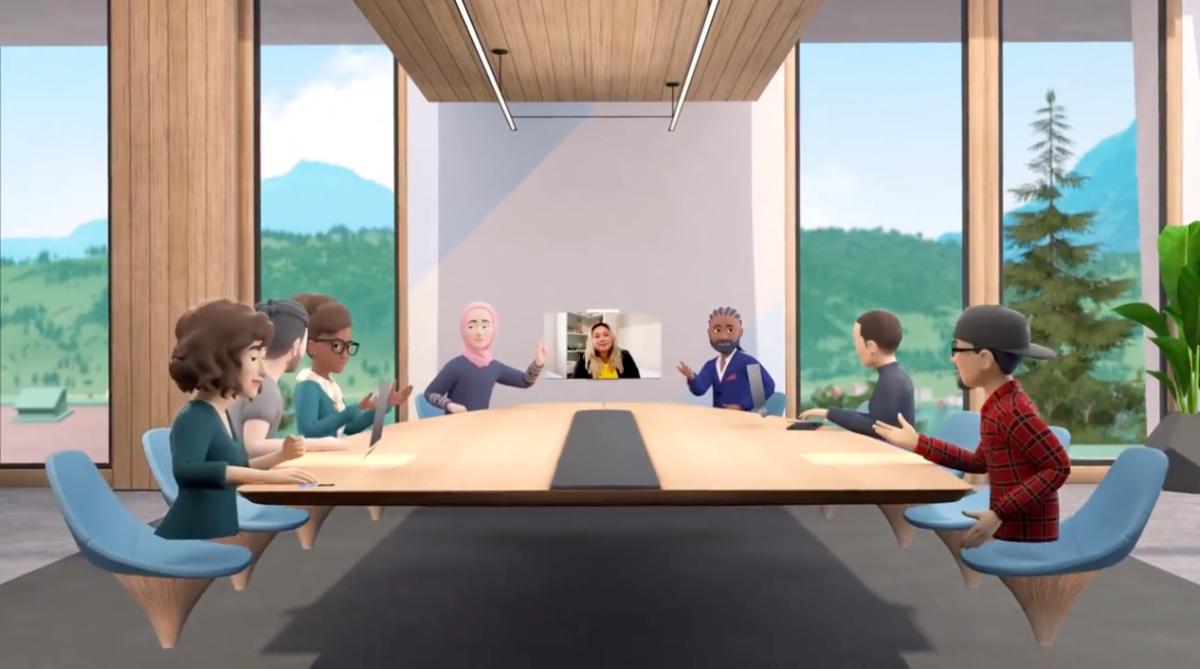
While Meta’s head honcho Mark Zuckerberg has acknowledged it will take time to build out the metaverse, Horizon Workrooms as they currently stand show that a lot is possible in this space. As the technology was only launched in August 2021 and is still in beta testing, this is just the first of what we’re seeing in terms of its capabilities and aesthetic.
As the metaverse continues to be built out, we may be able to conduct these meetings in increasingly unique spaces. In the latest version of Workrooms (v 1.3), you and your team can have your meeting in a meeting room located on the beach. Far beyond the traditional meeting room, we could at some point see meetings be held at world landmarks or in luxury venues – all digitally rendered, of course.
Explore the potential of the metaverse for business in our blog on 8 metaverse business opportunities and the future of the virtual world.
What technology will bring virtual meetings to life?
Having virtual meeting rooms like Horizon Workrooms is just one piece of the puzzle when it comes to running VR meetings. We need tech tools to actually ‘transport’ the user into these spaces, and make them feel as if they are truly immersed in a space with others.
When you enter a virtual space, you become an VR avatar (a digital figure that looks like you). You are able to move, speak, and look up, down, to the right and to the left of the space surrounding you. To do this, you need to have tech that fits to your face and body.
There’s simply no escaping that the VR experience, for the foreseeable future, will require a VR headset. Thankfully, these have become more compact in recent years.
To use a program like Horizon Workrooms, attendees would need to wear a piece of technology like the Oculus Quest, the latest version of which is the Meta Quest 2. This includes the VR headset, which the viewer looks into and then attaches around their head.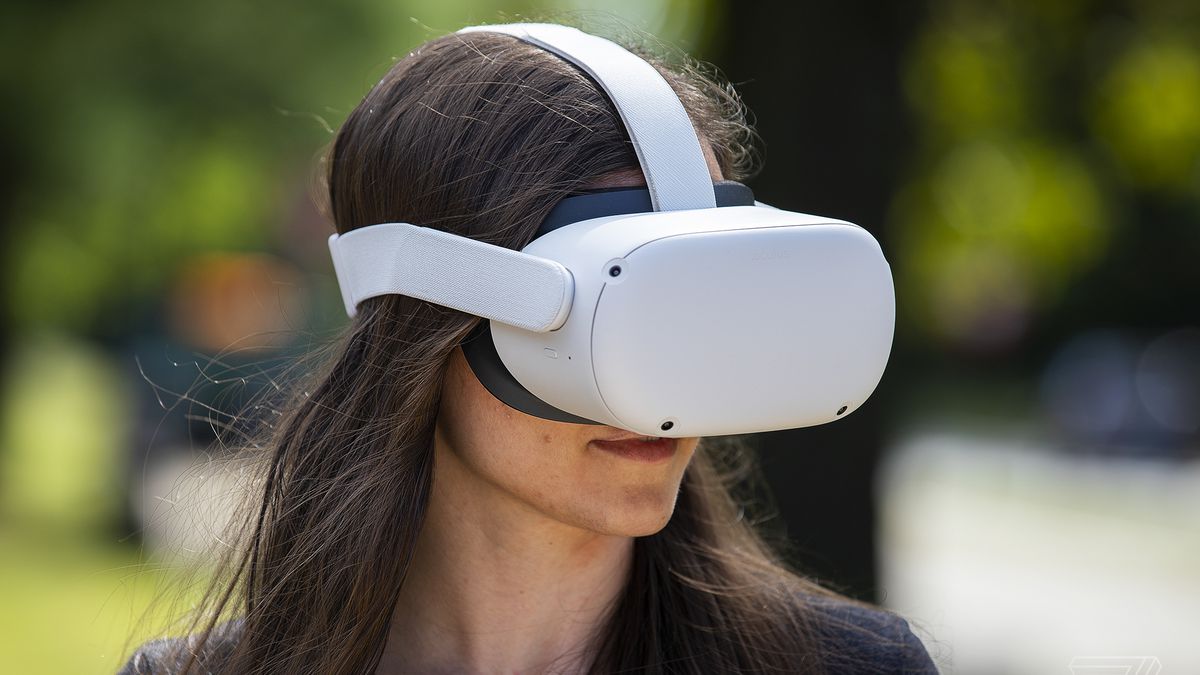
The Meta Quest headset. Image via The VergeWhile wearing the VR headset, the user also has two touch controllers so that they can move around in the environment. You use these touch controllers to create a ‘virtual boundary’, so that you don’t move beyond a certain spot, stopping you from bumping into objects in real life.
Currently the Meta Quest is priced from £299, so it’s not exactly accessible for small businesses with many other overheads. But in time these tools are likely to become much more universal, which may impact prices or lead to more budget-friendly versions.
What could be the benefits of VR business meetings?
When usage of these technologies and platforms becomes more widespread, what will businesses stand to gain by engaging with them? Will it only be used by big enterprises, or could they also make an impact for small to medium sized businesses?
We think that VR meetings, in conjunction with tools we’re already using like video conferencing and instant messaging, could take remote working to the next level. Let’s talk about the potential benefits of VR meetings for teams of all sizes.
Deeper connections and stronger engagement
A common criticism of remote working is that relationships built over Zoom can only be so effective. Whether this is true or not, VR meetings have the potential to provide a different solution – one that’s likely to be more popular with teams than a permanent return to the office.
Although it’s not quite the real thing, VR meetings allow us to inhabit space with our colleagues. When you’re participating in virtual business meetings, you don’t have the option of turning your microphone and camera off. Even though VR takes us physically closer to technology, it also removes many of the distractions of our devices.
The combination of being in the same ‘room’ as your colleagues and stepping away from your other technology can help build better relationships. You may be a thousand miles away from each other if you’re working with global teams, but if you’re connecting in the same VR environment, you are undeniably together.
Learn more about staying connected with remote colleagues in our blog on 15 ways to stay connected virtually with coworkers.
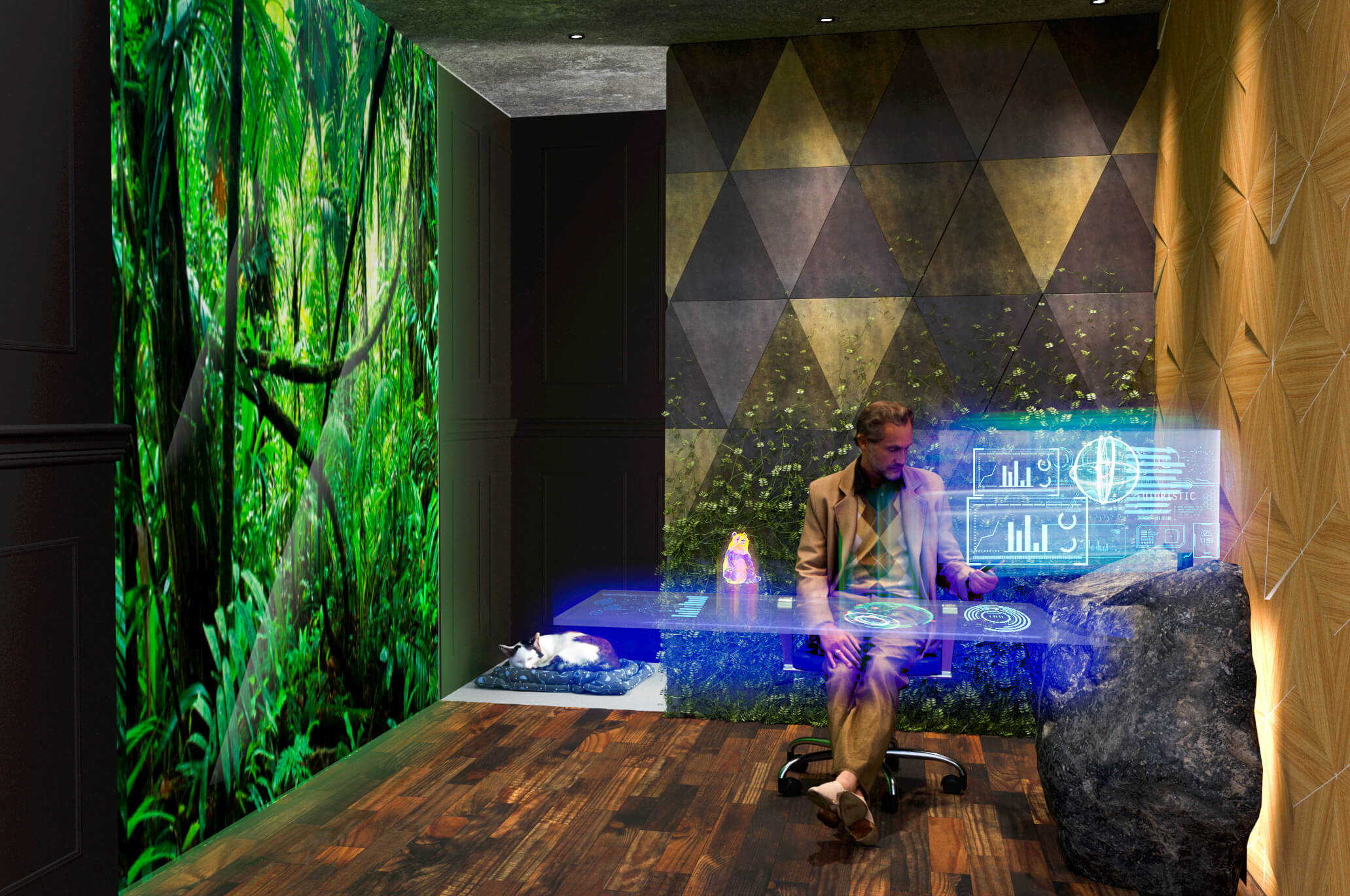
Could virtual reality capabilities in the home office help teams connect? A still from Employment Hero’s ‘Future Workspace Project’, in collaboration with artist Benjamin Findlay.
Better collaboration
Remote collaboration can be challenging. For similar reasons to why connections can be better forged in virtual reality, so too can team members better collaborate. Instead of seeing a 2D version of each other over video conferencing, the user can see their colleague in space.
They can use virtual employee collaboration tools like virtual whiteboards, shared documents and digital drawings, all in their own virtual meeting rooms. Ideas, especially creative or design centric ones, can be shared effectively.
Even the sense of movement of others can help employees share ideas and aid remote collaboration. “…the ability to use and read body language and actively participate in group discussions by scribbling post-it notes or drawing on a virtual whiteboard should make remote meetings in VR more engaging and less sedentary,” suggests Sam Gilbert, researcher at the University of Cambridge.
“They require much more active use of the neck, shoulders, arms and hands than a typical hour on Zoom.”
To enhance your remote meetings, read our guide on how to make the most of your remote meetings.
Learning and development opportunities
You may have already heard of, or even attended, a VR conference. With more companies experimenting with VR than ever before – spurred by the limitations of the pandemic – you and your team are more likely to be exposed to virtual networking and development opportunities in the coming years.
Internally, businesses may also benefit from running virtual reality training sessions. Gilbert points out that this is not exactly new for some industries; astronauts, pilots, law enforcement and surgeon roles have been using VR in some form for learning for years. But as more accessible platforms with customisable environments surface, any business training in any skill could benefit.
With online learning already proving wildly successful for teams (we’ve found it so effective that we offer a Learning Management System as part of our HR platform), we’re looking forward to seeing the possibilities in the digital learning space.
Sustainability and cost benefits
It’s no secret that travel has a huge impact on the climate. The BBC estimates that the aviation industry is responsible for around 5% of global warming. In terms of cars, personal vehicles account for more than three quarters of greenhouse gases that come from transport, a sector that emits more than any other.
Sometimes travel is unavoidable, but often – it isn’t.
With remote work already popular, we’re seeing a lot of people ditch the commute, producing less emissions and increasing a sense of work-life balance. As the remote working world becomes more advanced, aided by technology like VR, we can reduce travel even more. After all, why fly to another country to be in a room with your colleagues when you can be in a ‘room’ with your colleagues from your home office?
The cost saving potential of reducing travel is also obvious. Not only can companies pay less for air travel for their team members, employees can dodge petrol prices (which are becoming increasingly extreme) and avoid the commute. It’s a win on both ends.
Virtual workspaces and the classic office space
While much is still unknown about the future of the office, we do know that just about anything is possible. With virtual reality, sustainability, and employee wellness in focus, we believe that future workspaces could be very different.
Last year, we visualised both collaborative workspaces of the year 2040 with digital artist Benjamin Findlay for our ‘Future Workspaces Project’. While we believe most work will be done remotely, working spaces will become a merge of virtual and real-world elements. How do you think we went?
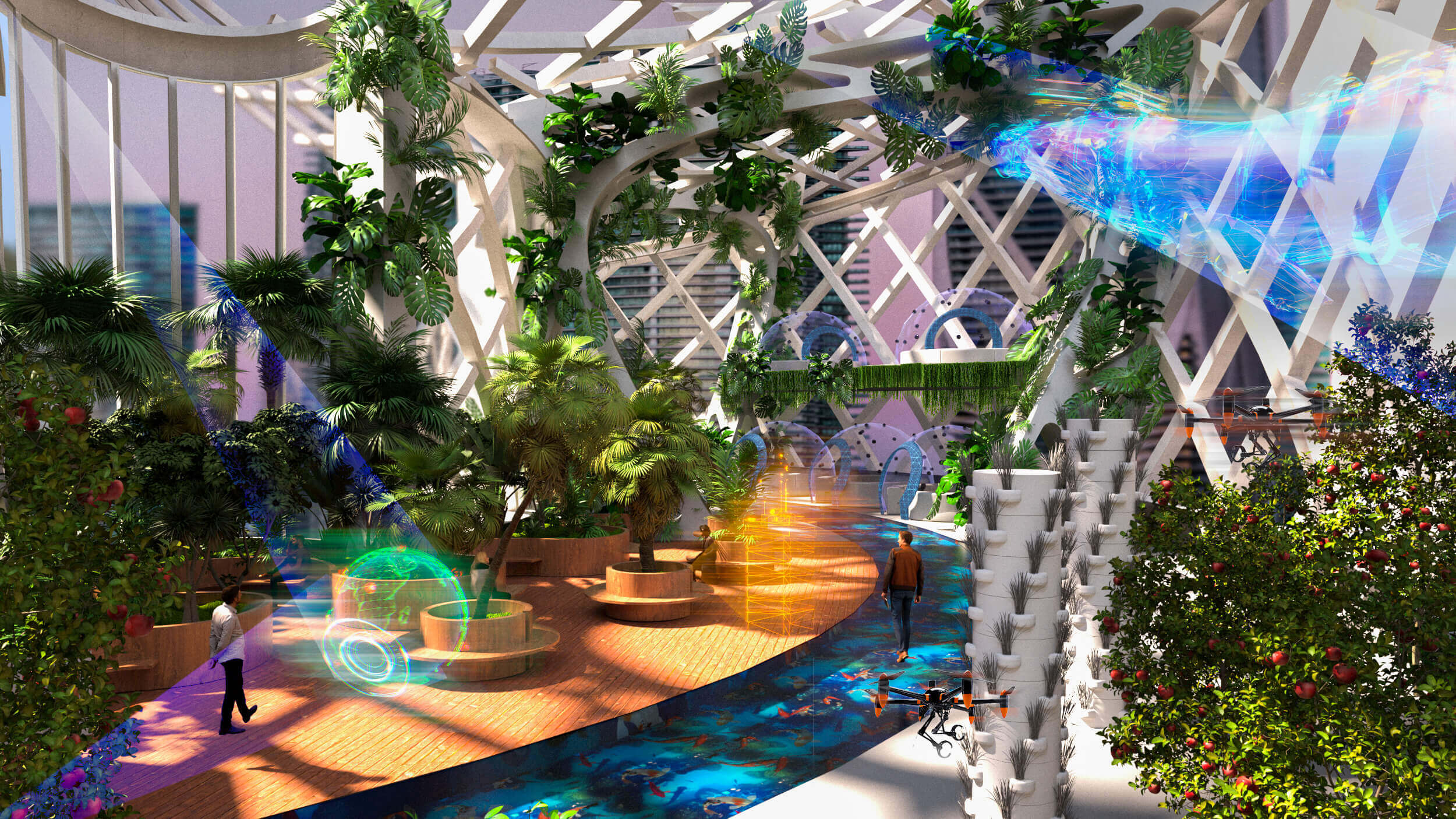
Our coworking space, Rhizome.
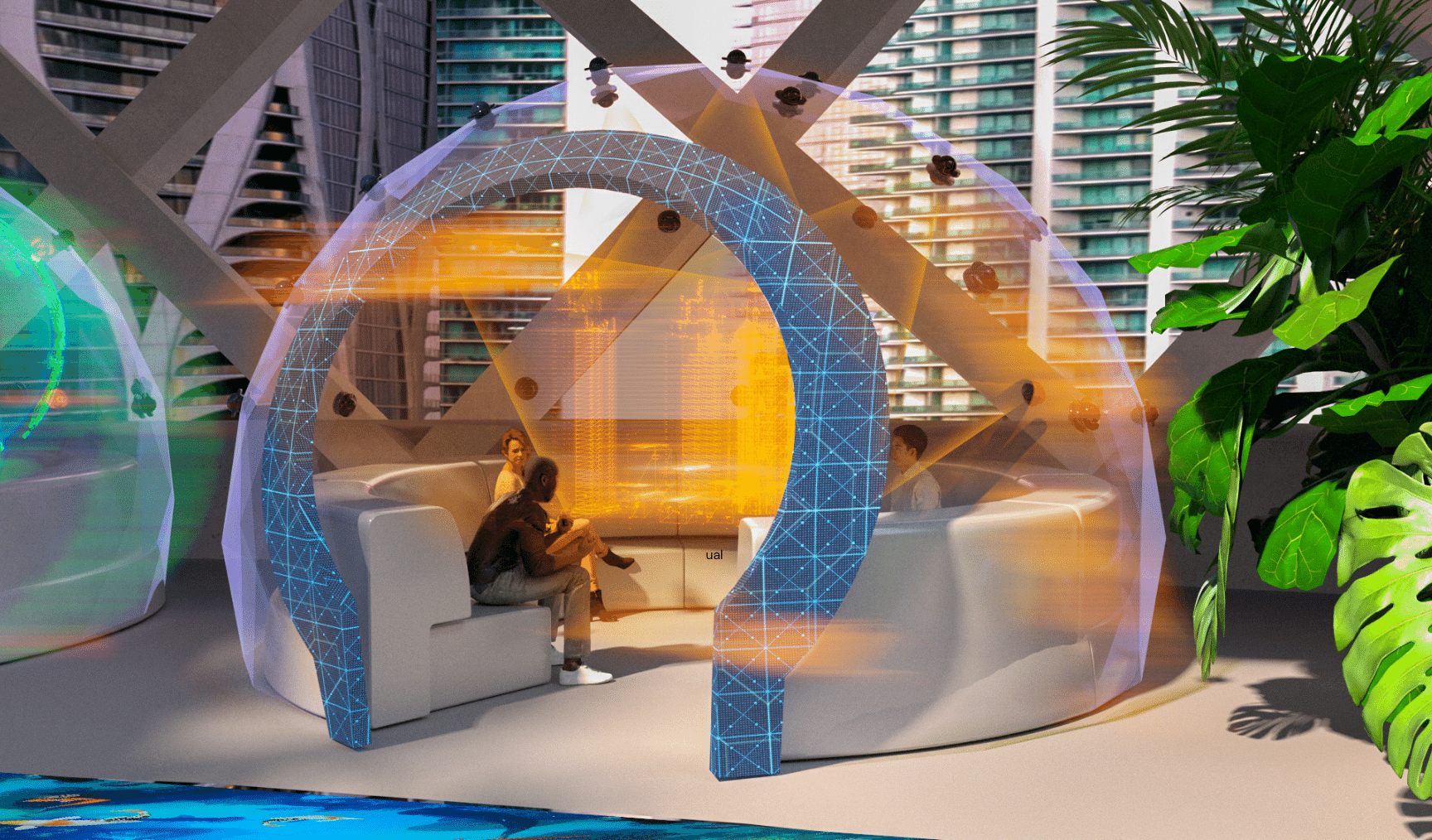

Virtual Reality may be the future, but the remote work revolution is happening now
The metaverse, embodied avatars, virtual reality – these concepts and technologies are closer to becoming universal than we think. We understand that at this point in time though, it can all seem a little abstract.
The rise of remote work, however, is happening right now. As pandemic restrictions fall away, more and more employees are vocalising that remote work is their preferred way forward. Future-thinking leaders and employers will know that remote working is here to stay.
Without embracing remote work now, your business could fall behind in the adoption of powerful technologies like virtual reality and digital, global workspaces. It’s a huge emerging opportunity, but in order to get the most out of it, employers need to perfect their remote framework first.
We can help you become a master of effective remote workforce management. Download our free Remote First Workplace Playbook now.
Related Resources
-
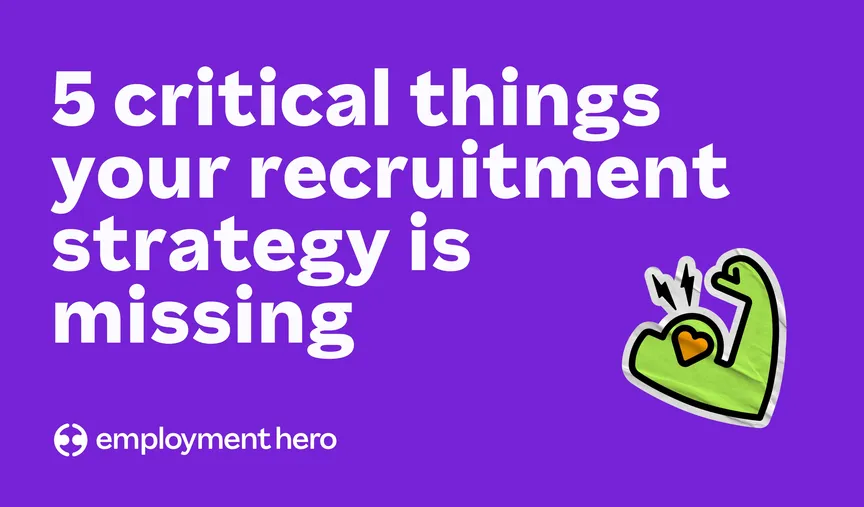 Read more: From hiring mismatch to SmartMatch: 5 critical things your recruitment strategy is missing
Read more: From hiring mismatch to SmartMatch: 5 critical things your recruitment strategy is missingFrom hiring mismatch to SmartMatch: 5 critical things your recruitment strategy is missing
We’ve wrapped up five critical things your recruitment strategy might be missing so you can feel confident in your hiring…
-
 Read more: Product Update: June 2025
Read more: Product Update: June 2025Product Update: June 2025
Follow our June 2025 product update as we share all of the latest and greatest features we’ve released over the…
-
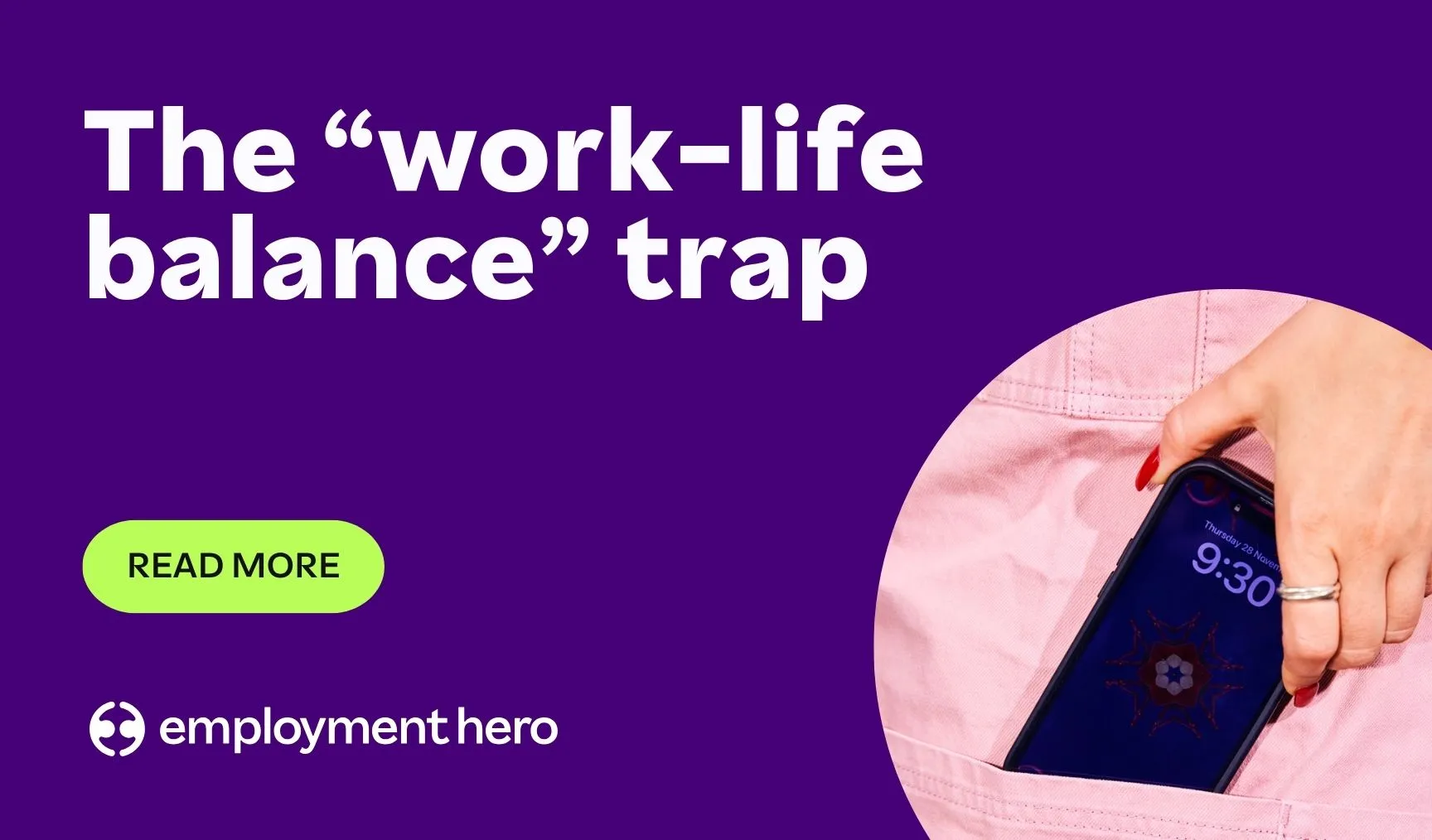 Read more: The ‘work-life balance’ trap: Why promising it is hurting your SME recruitment (and what to promise instead)
Read more: The ‘work-life balance’ trap: Why promising it is hurting your SME recruitment (and what to promise instead)The ‘work-life balance’ trap: Why promising it is hurting your SME recruitment (and what to promise instead)
For growing SMEs, work-life integration is a sustainable way to support your team and attract top talent. Explore how your…





















